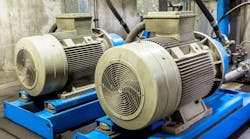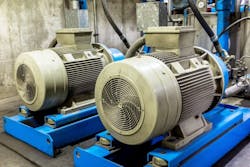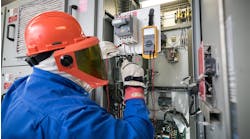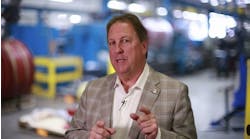Using a rotation tester when installing a motor saves time and prevents problems such as driving the load backward. In some cases, you must get the motor rotation correct or massive damage will occur. Some equipment isn’t designed to run in reverse. And for some equipment that can be run in reverse, you really don’t want to do that (a sewage pump, for example).
So you connect the motor and, using the rotation tester, discover it runs backward. How do you fix this? Well, that depends on the kind of motor you’re working with.
- DC series wound motor. Reverse either the armature leads or both the series and shunt leads.
- DC shunt wound motor. Reverse either the armature leads or the shunt leads.
- Two-phase, three wire motor. Interchange the two outside motor leads (1 and 2).
- Two-phase, four wire motor. Interchange the leads in one phase. Switch any two leads.
After changing the leads, use the rotation tester to confirm the motor rotates in the correct direction.
One approach that allegedly saves time is to completely finish the wiring job (including wrapping the connected leads in motor lead tape) and if rotation must be changed then swap the wires around at the motor controller. As a general principle, avoid spreading change beyond the immediate area. Each place at which you make a change is one more place where you could make an error. So if you must reverse leads, do so where you originally connected the leads (presumably in the motor weatherhead or terminal box).
A good practice when going through this process is to label the leads once you’ve verified rotation. This way, if you need to disconnect the motor from its supply for some reason before the installation is final, you almost certainly won’t need to redo the leads after the rotation testing. Important: Always perform rotation testing no matter how sure you are the connections are right. Trust but verify!
If you’re replacing a motor and the existing leads are labeled, test the rotation per that configuration. If the labeling is correct, you can leave it. If the labeling is not correct, you will need to remove it and relabel the leads.
Some other good practices:
- Always verify the supply voltage is correct; measure phase to phase and each phase to ground.
- If the supply power for a three-phase motor differs more than a few volts between phases, calculate the voltage imbalance, and if it’s more than 2 percent, note this problem for follow-up action.
- Never twist and tape leads. Use approved connectors. Motor lead tape may be applied over such connectors, but follow the recommended practice if doing so.
- After installing a motor, perform vibration testing. If there’s excess vibration, the motor (and possibly the load) will fail; this problem must be corrected before releasing the motor for service.





